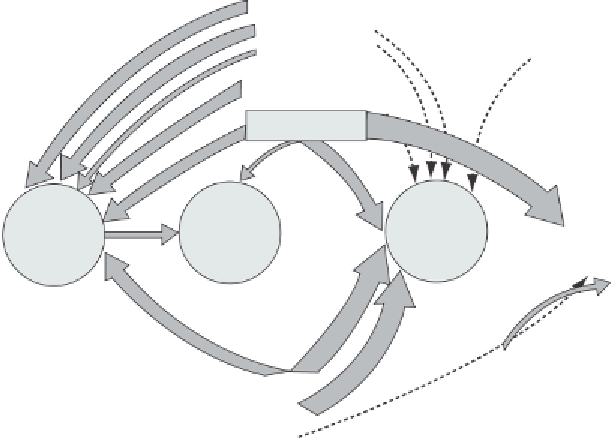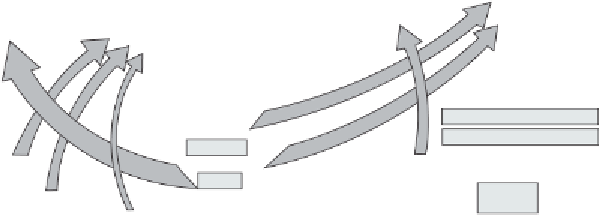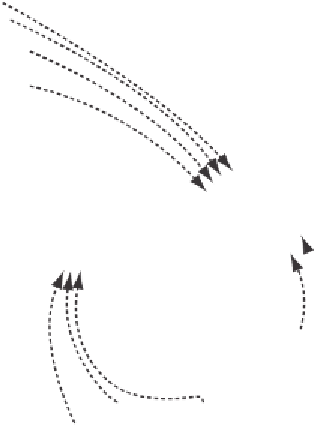Agriculture Reference
In-Depth Information
Figure 4.3
Flow of energy and
mass among invertebrates, fish,
and seabirds (
Procellariform
)in
the Gulf of Alaska. The larger the
width of the arrow, the greater
the relative flow. Note how some
species prefer crustaceans (e.g.,
copepods and euphausiids), but
other species consume larger
forage species, such as squid.
From G. A. Sanger,
Diets and Food
Web Relationships of Seabirds in the
Gulf of Alaska and Adjacent Marine
Areas
, OCSEAP Final Report 45, U.S.
Department of Commerce, National
Oceanic and Atmospheric
Administration, Washington, DC, 1983,
pp. 631-771.
Parathemisto libellula
Hyperiid Amphipod
Parathemisto pacifica
Hyperiid Amphipod
Telemessus cheiragonus
Crab
Unidentified Decapod
Calanoid Copepod
Nereid Polychaete
Paracallisom a alberti
and Unidentified
Gammarid Amphipods
Thysanoessa spp.
Euphausids
Northern
Fulmar
N=43
Sooty
Shearwater
N=178
Short-tailed
Shearwater
N=201
Fork-tailed
Storm Petrel
N=8
Unidentified Gastropod
Unidentified Osmeridae
Bivalve
Capelin
Pacific Sand Lance
Cyanea capillata
* Medusae
Squid
Pacific
Sandfish
Pacific Tomcod
Stenobrachius rannochir
Lanternfish
Unidentified Fish
Unidentified Gadid
Walleye Pollock
* Inferred from non-FWS data
live within an interconnected network or web of life (see Fig. 4.3). In a way this
is not any different from the energy and mass budgets of the chemical reactors
familiar to chemical engineers. Of course, living things are more complex and
complicated, but that is something to which any successful environmental engi-
neer will have to adapt. For example, the ecologist may be perfectly happy to
understand the complex interrelationships shown in Figure 4.4, but in the event
of designing an offshore oil rig or following an oil spill, the design engineer must
append this web to another system that shows humans as consumers. Also, the
rig or the spill may change the abundance and richness of species, so the entire
web is changed. Regulations are merely floors and ceilings of good engineering
design. For example, despite compliance with environmental regulations, bio-
logical populations are declining as a result of residual stresses from a number of
drivers, including:
Land-use change
Resource extractions
Chemical pollutants
Exotic invasive species
Climate change



















Search WWH ::

Custom Search